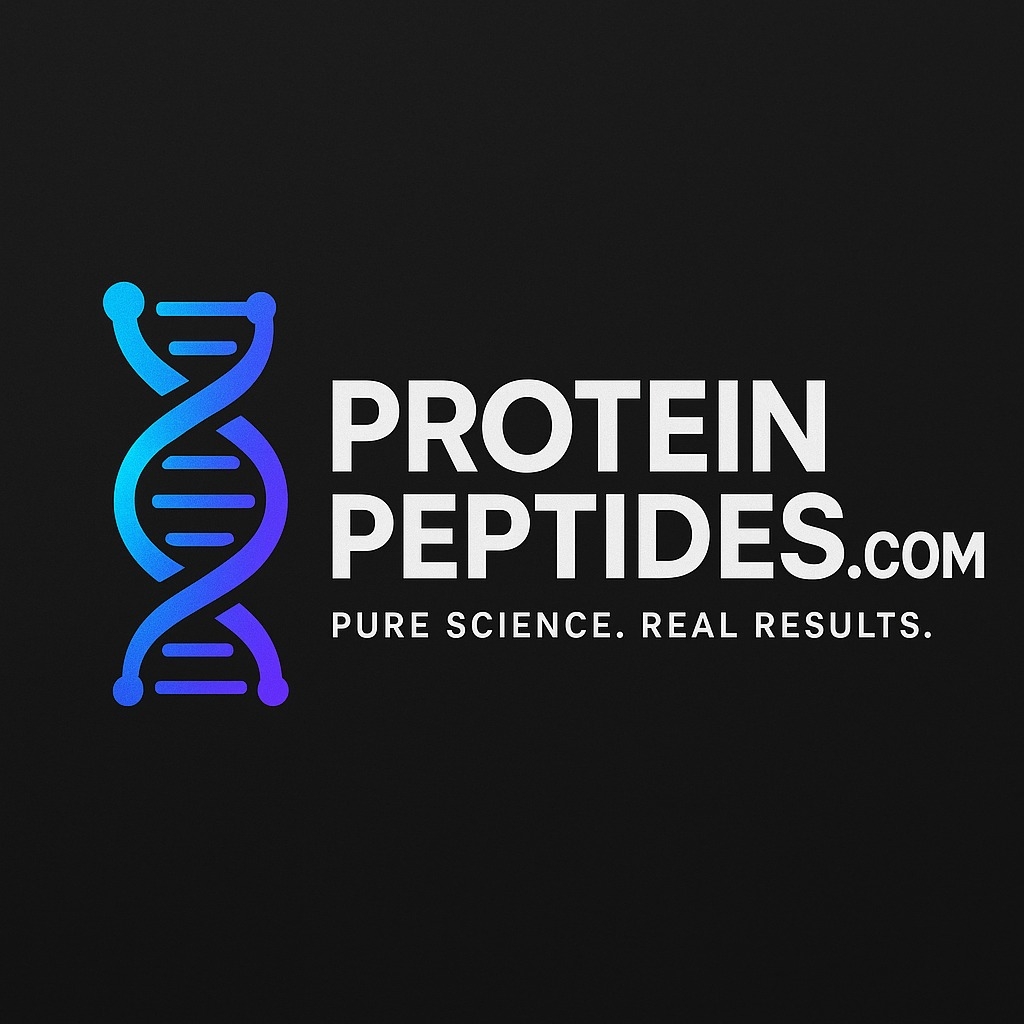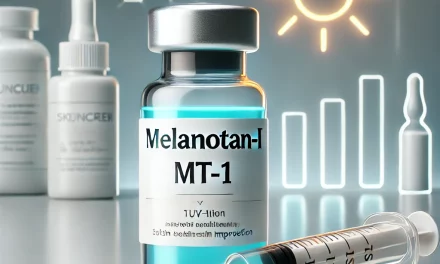What Is the Difference Between a Peptide and a Protein?
Proteins and peptides are both crucial components of biological systems, playing essential roles in the body’s structure, function, and regulation. While they share some similarities in their chemical makeup, they differ significantly in terms of size, function, and biological activity. Understanding the distinction between peptides and proteins is important in fields such as biochemistry, molecular biology, and medicine. This article will explore the key differences between peptides and proteins, focusing on their structure, size, functions, and applications.
What Are Peptides?
Peptides are short chains of amino acids, typically consisting of fewer than 50 amino acids. They are formed through peptide bonds, which link the carboxyl group of one amino acid to the amino group of another. Peptides can occur naturally in the body or be synthesized in laboratories for therapeutic and research purposes.
Because peptides are smaller than proteins, they tend to have more specialized functions and are often involved in signaling pathways, hormone regulation, immune responses, and other processes that require relatively simple, short-term biological interactions.
Types of Peptides:
- Oligopeptides: Short peptides typically consisting of 2 to 20 amino acids.
- Polypeptides: Longer chains of amino acids, typically between 20 and 50 amino acids, that may eventually fold into a functional protein or have independent functions.
Peptides are often classified according to their specific biological activity. For example, neurotransmitters like endorphins and hormones like insulin are both peptides, despite their diverse functions.
What Are Proteins?
Proteins are large, complex molecules made up of long chains of amino acids, typically consisting of 50 or more amino acids. Proteins are formed through peptide bonds just like peptides, but due to their larger size and more complex folding, they exhibit a far wider range of structures and functions. Proteins can consist of one or more polypeptide chains folded into intricate three-dimensional shapes, and this shape is directly linked to their function.
Proteins are essential for nearly every biological process in the body. They serve as structural components (e.g., collagen in skin, hair, and bones), enzymes that catalyze biochemical reactions (e.g., digestive enzymes like amylase), antibodies for immune defense, and as messengers in signaling pathways (e.g., receptors or transport proteins like hemoglobin).
Examples of Proteins:
- Enzymes: Catalysts that speed up biochemical reactions, such as lactase, which breaks down lactose in the digestive system.
- Structural Proteins: Provide support to cells and tissues, such as actin and myosin in muscle contraction.
- Transport Proteins: Carry molecules across cell membranes or through the bloodstream, such as hemoglobin transporting oxygen.
- Antibodies: Part of the immune system, proteins that identify and neutralize foreign substances like bacteria and viruses.
Key Differences Between Peptides and Proteins
- Size:
- Peptides: Typically contain fewer than 50 amino acids. They are smaller, simpler molecules that are often produced as precursors to larger proteins.
- Proteins: Composed of 50 or more amino acids, proteins are significantly larger and more complex in their structure and function.
- Structure:
- Peptides: Peptides generally have a linear structure, although they can form simple secondary structures (e.g., alpha helices or beta sheets) in some cases. They may or may not fold into a stable, three-dimensional shape.
- Proteins: Proteins have highly organized, three-dimensional structures that are essential for their function. Proteins can fold into complex tertiary structures and, in some cases, form quaternary structures (multiple polypeptide chains interacting).
- Function:
- Peptides: Peptides are typically involved in short-term, localized biological processes. They often act as hormones, neurotransmitters, or signaling molecules. For example, insulin is a peptide hormone that helps regulate blood sugar levels.
- Proteins: Proteins are involved in a broad range of cellular functions, from structural support to metabolic reactions. They serve as enzymes, antibodies, transport molecules, and structural elements in tissues.
- Synthesis:
- Peptides: Peptides can be synthesized naturally within cells or artificially in laboratories using techniques like solid-phase peptide synthesis. They are often made as precursors to proteins or as biologically active molecules that do not require the complexity of full protein folding.
- Proteins: Proteins are synthesized in cells by ribosomes, following the instructions encoded in DNA. This process, known as translation, involves the assembly of amino acids into long polypeptide chains, which then fold into their functional forms.
- Stability:
- Peptides: Due to their smaller size and simpler structure, peptides tend to be more fragile and less stable than proteins. They are more prone to degradation by enzymes (peptidases) and may have a shorter lifespan in biological systems.
- Proteins: Proteins are typically more stable than peptides, especially those with complex tertiary and quaternary structures. Their stability allows them to perform long-term functions in cells and tissues. However, some proteins can also be degraded by proteases.
- Applications in Medicine:
- Peptides: Due to their specificity and small size, peptides have gained significant interest in the development of therapeutic drugs. Peptides can act as potent, highly targeted treatments for a variety of conditions, including hormone imbalances, cancer, and infections. For example, synthetic peptides like GLP-1 receptor agonists are used in the treatment of Type 2 diabetes, and peptide vaccines are being developed for cancer and viral infections.
- Proteins: Proteins have a wide range of applications in medicine, especially in the form of therapeutic enzymes, monoclonal antibodies, and vaccines. For instance, recombinant proteins like insulin and erythropoietin (EPO) are used to treat diseases such as diabetes and anemia. Additionally, monoclonal antibodies, like those used for cancer treatment, are proteins designed to target specific antigens on cancer cells.
- Processing and Activation:
- Peptides: Many peptides are initially produced as larger, inactive precursors known as propeptides. These precursors are then cleaved or modified to become active peptides. For example, proinsulin is processed to form active insulin, which regulates blood sugar.
- Proteins: Proteins may also be produced as inactive precursors called proproteins or zymogens. After synthesis, proteins often undergo complex folding and sometimes post-translational modifications (such as phosphorylation or glycosylation) to become fully functional.
Summary of Key Differences
| Feature | Peptides | Proteins |
|---|---|---|
| Size | Less than 50 amino acids | 50 or more amino acids |
| Structure | Often linear, may form simple secondary structures | Complex 3D structure, tertiary/quaternary structures |
| Function | Short-term, localized actions (hormones, signaling) | Long-term, diverse roles (enzymes, antibodies, structural) |
| Synthesis | Produced naturally or synthetically | Synthesized in cells, via ribosomes |
| Stability | Less stable, prone to degradation | Generally more stable |
| Applications in Medicine | Used for specific therapeutic purposes | Used for broad applications (enzymes, antibodies, etc.) |
| Activation | Cleaved from precursors to become active | May be cleaved and undergo post-translational modifications |
Conclusion
Peptides and proteins are both essential biomolecules, but they differ in their size, structure, function, and stability. Peptides are smaller, simpler molecules that often act as hormones, neurotransmitters, or signaling molecules in short-term biological processes. Proteins, on the other hand, are larger and more complex, performing a wide variety of long-term cellular functions, from structural support to enzyme catalysis.
Understanding the differences between peptides and proteins is important in fields ranging from biochemistry to medicine, as each has unique roles and applications. While peptides offer targeted and efficient therapeutic options, proteins provide the structural and functional backbone necessary for life. Both peptides and proteins are indispensable for maintaining health and homeostasis in living organisms.
What Is the Difference Between a Peptide and a Protein?





